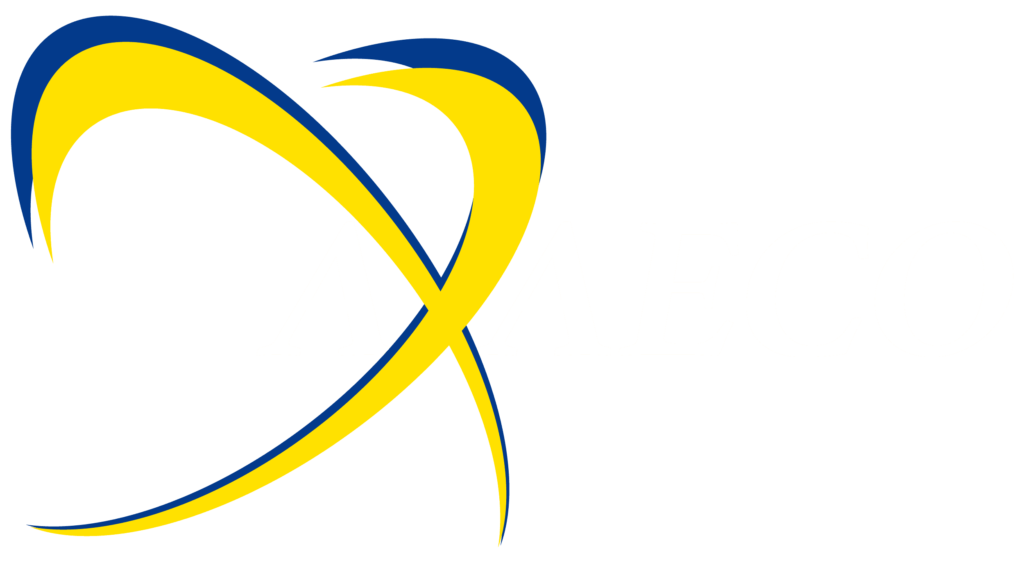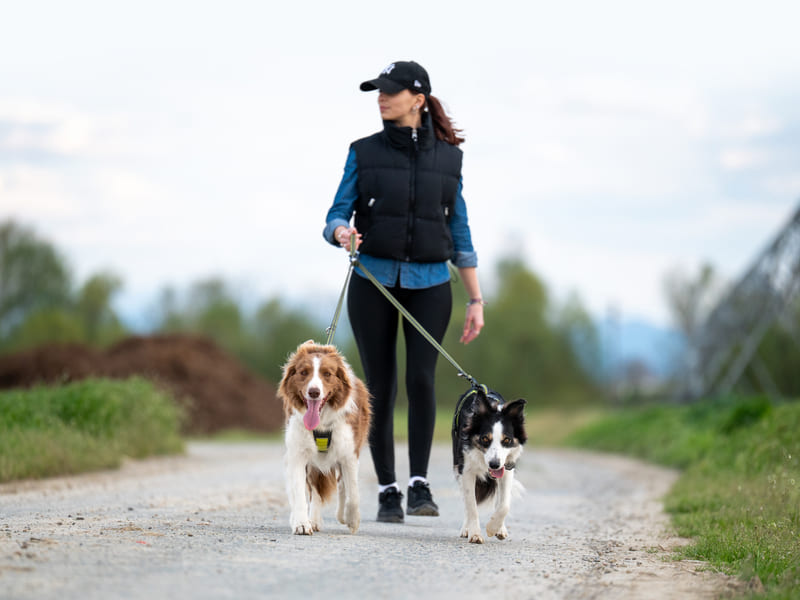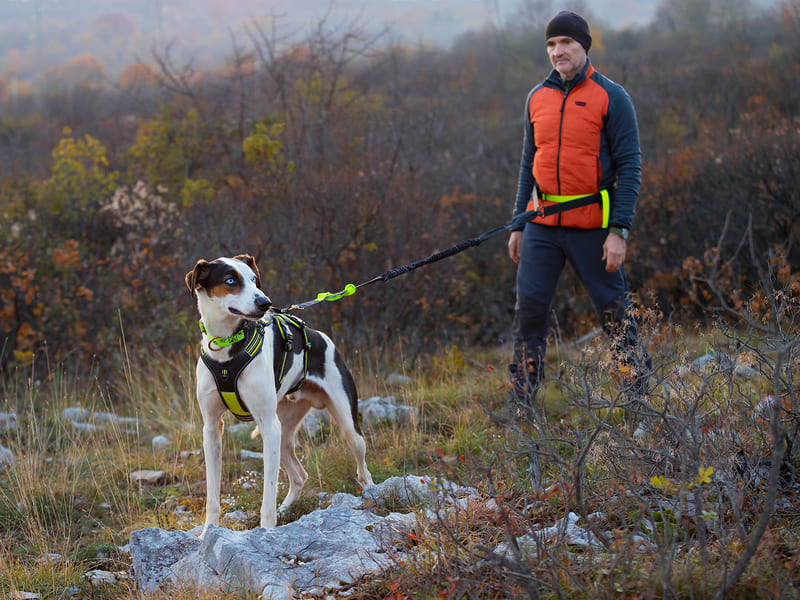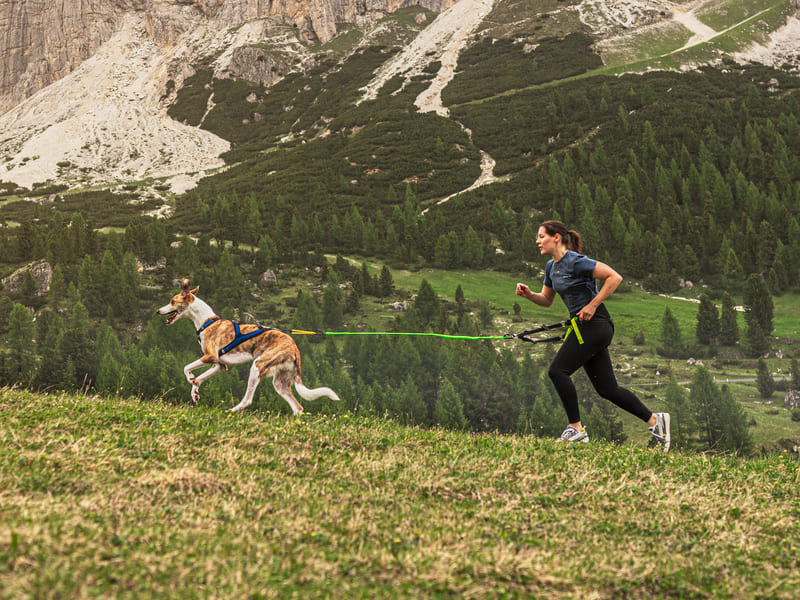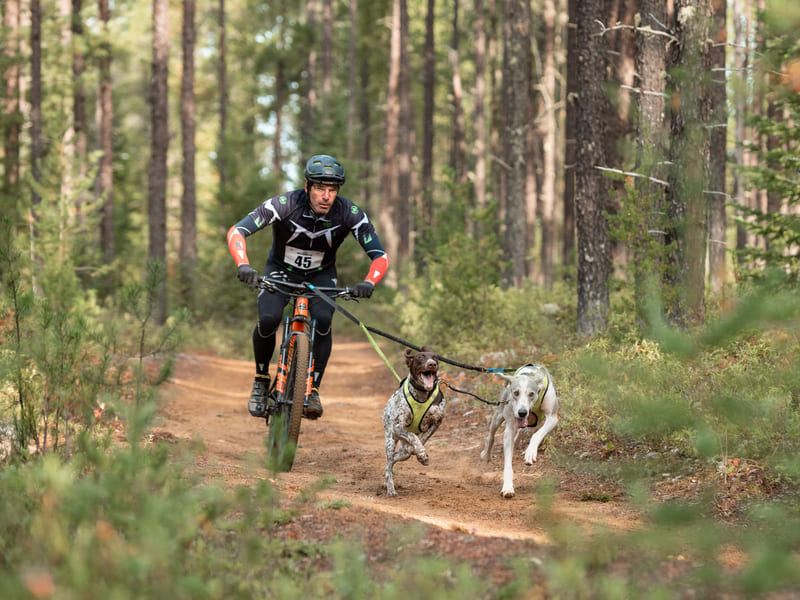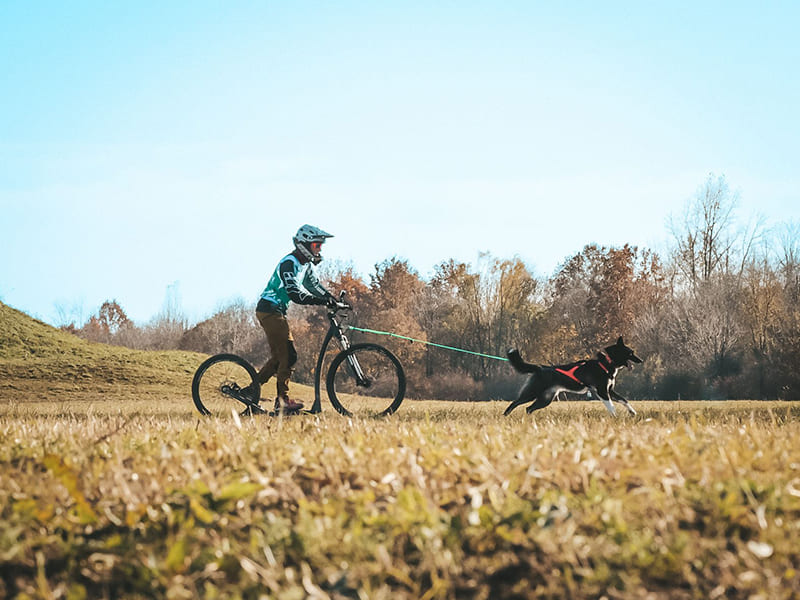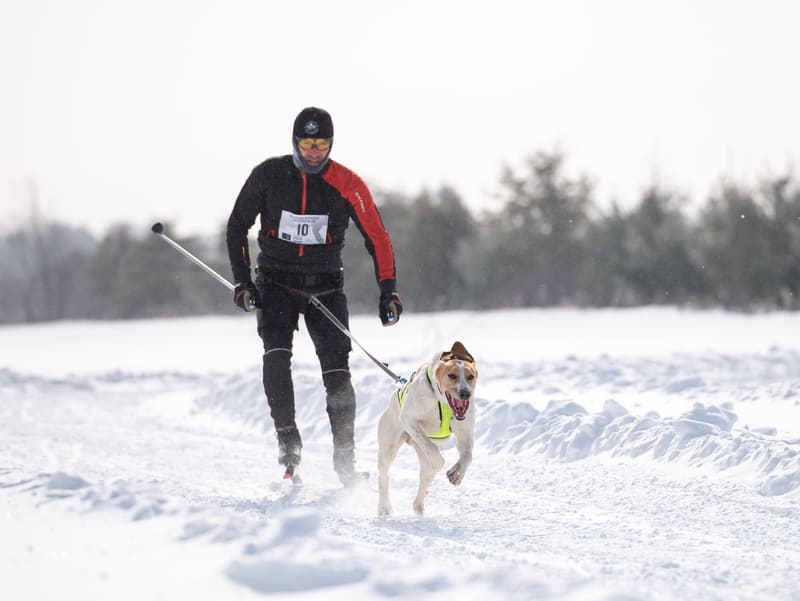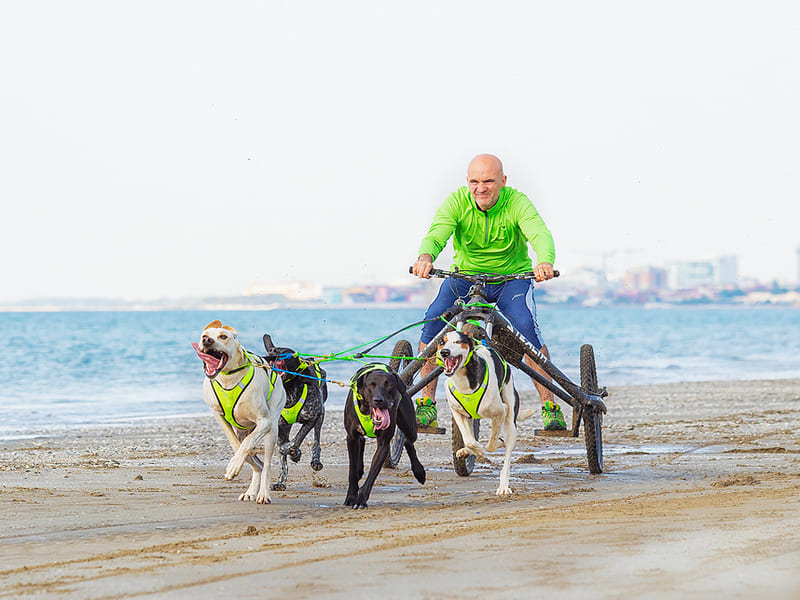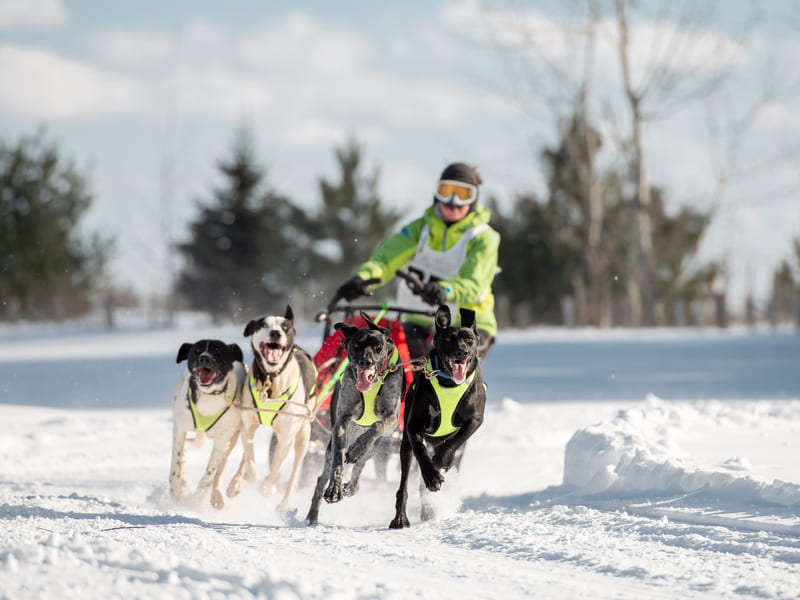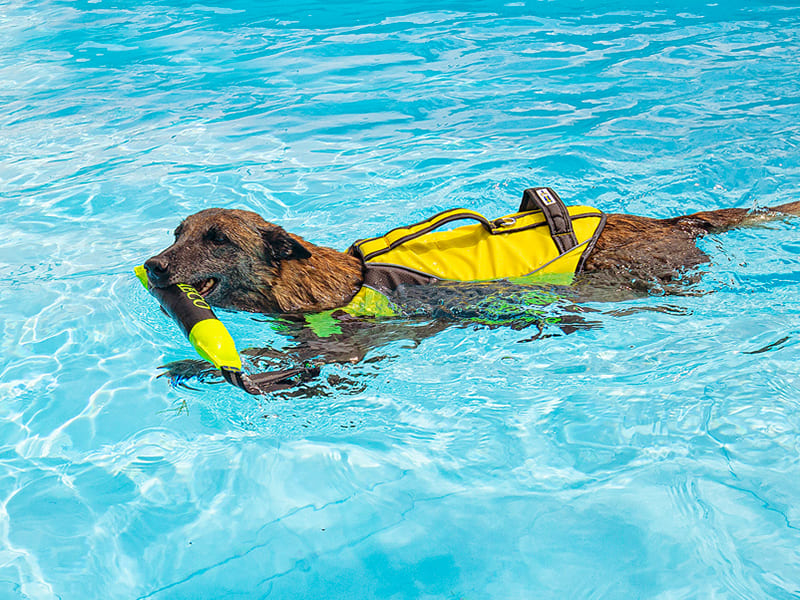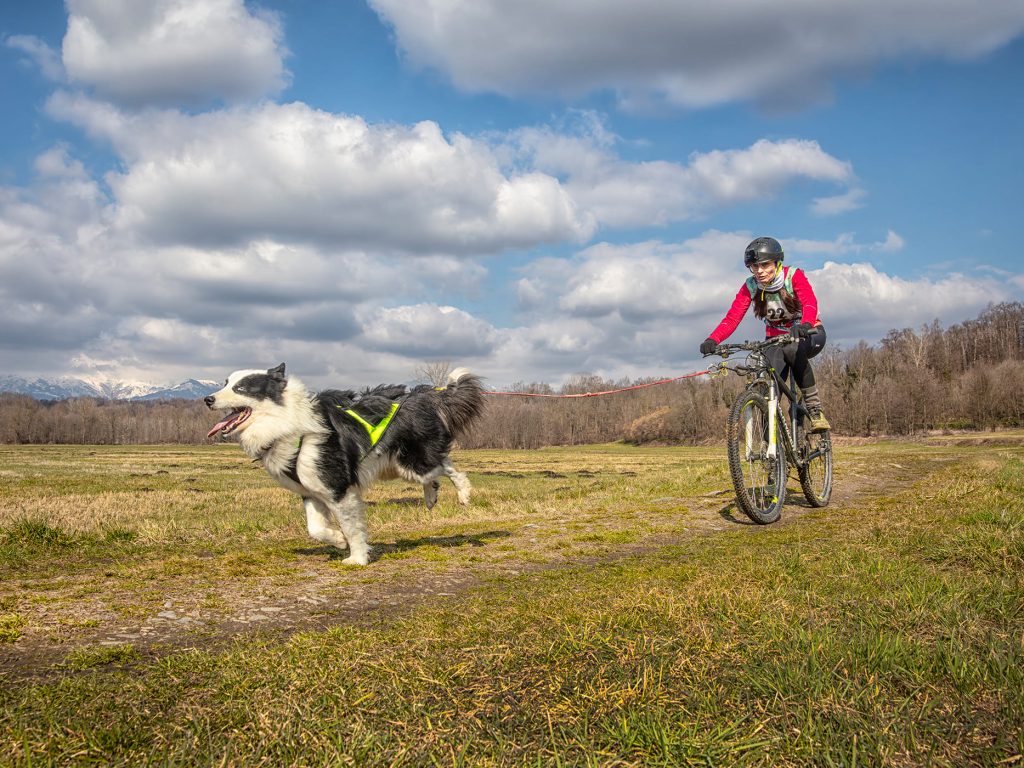Mushing is a high-paced activity where the cooperation between human and dog is the main focus. During the dryland season, when the snow is absent, there are several disciplines to practice. The most popular are canicross, running with a dog, bikejoring, cycling with a dog, and dogscooter, kick scooter with a dog. These disciplines offer both exercise, nature experiences, and a strong bond between handler and dog. Here, we go through what each discipline involves, what equipment is required, how to prepare, and what is expected of you as a participant.
Canicross – Running with a Dog
Canicross is the most accessible discipline within mushing. It means that you run together with your dog, who is attached to a pulling belt via an elastic towline. The dog runs in front, and the pulling from the dog provides an extra drive in your running.
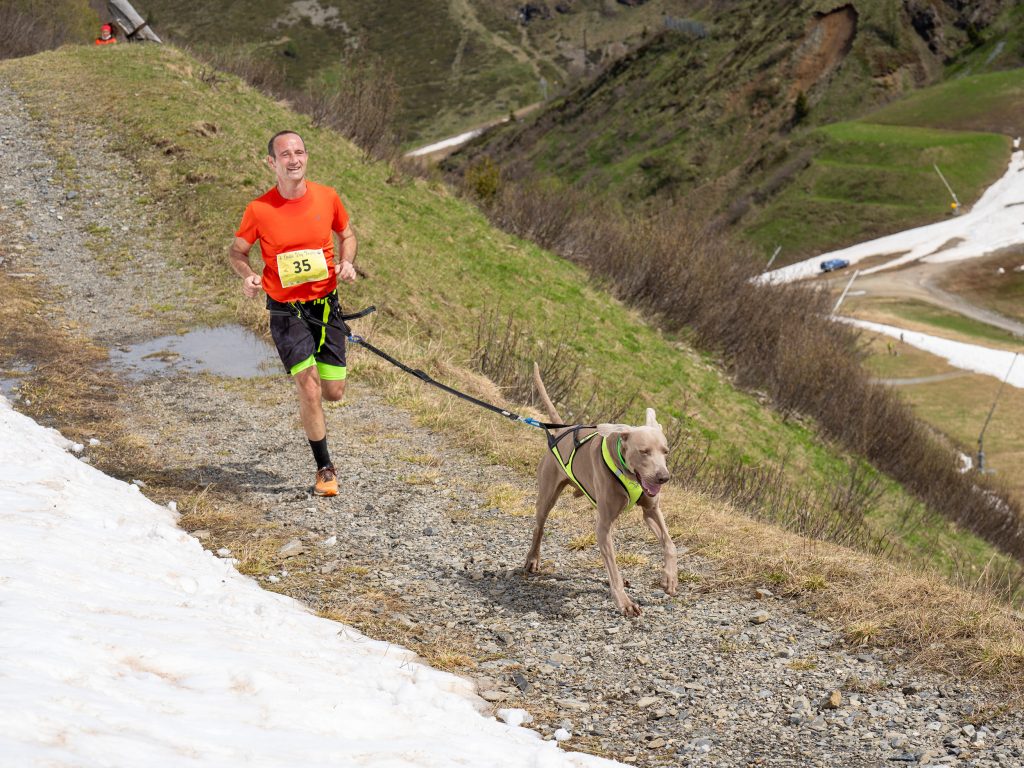
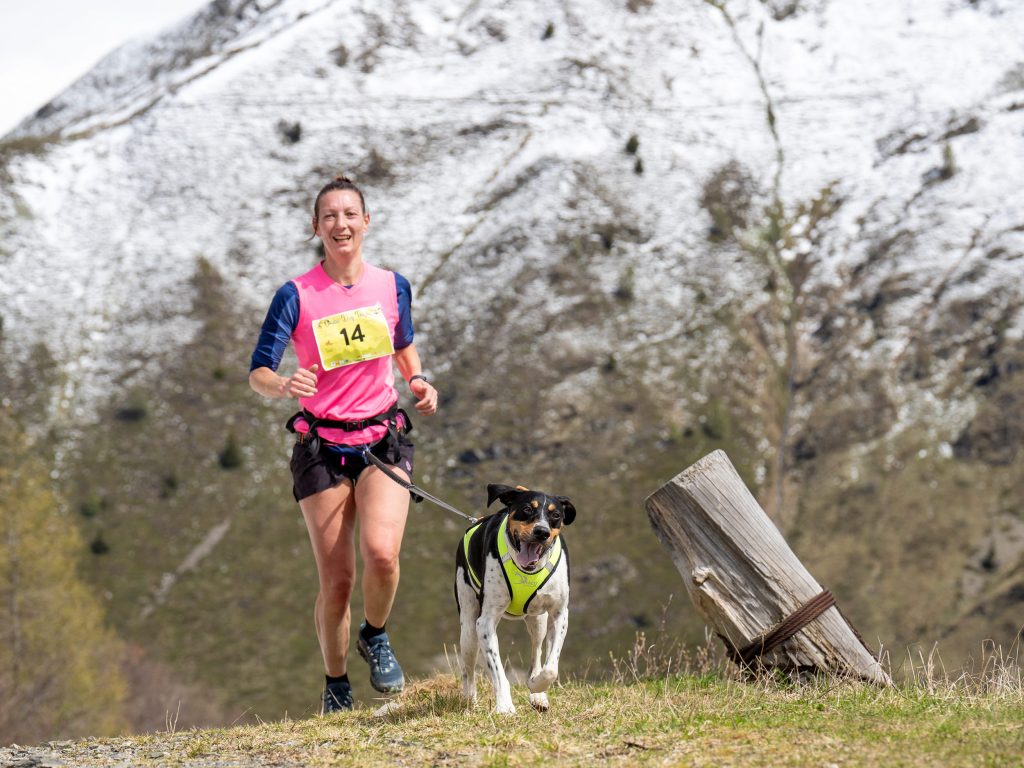
Equipment for canicross:
- Waist belt: An ergonomic belt that distributes the pulling force over hips and back.
- Towline with shock absorption: An elastic line that reduces jerks and provides a smoother pulling experience.
- Harness for the dog: A pulling harness designed to give the dog freedom of movement and comfort.
- Good running shoes: Preferably with grip for off-road terrain, as canicross is often practiced on trails and forest paths.
Dog preparation:
- Train commands such as "forward", "right", "left" and "stop" so you can communicate well with your dog.
- Start with shorter distances and gradually increase to teach the dog what pulling means and to allow their body to get used to it. Reward the dog with praise, treats, or toys to further reinforce the joy of running together!
- Make sure the dog is healthy, in good condition, and motivated to pull.
What is required of the participant?
You need to have a good basic fitness level, be attentive to your dog’s signals, and be able to adjust pace and intensity. Communication and interaction with your dog are crucial – you are not only a runner, you are also the team leader.
Bikejoring – Cycling with a Dog
Bikejoring is a fast and adrenaline-filled discipline where you cycle while the dog pulls you forward. It requires good control, quick reflexes, and the right equipment to be safe and enjoyable.
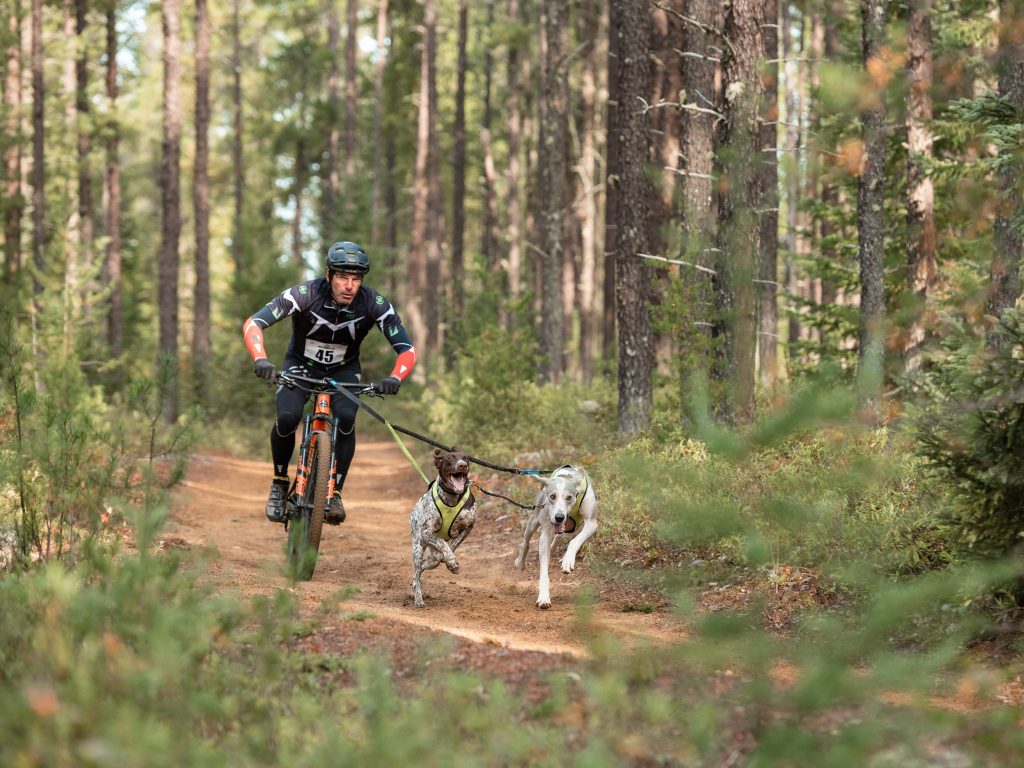
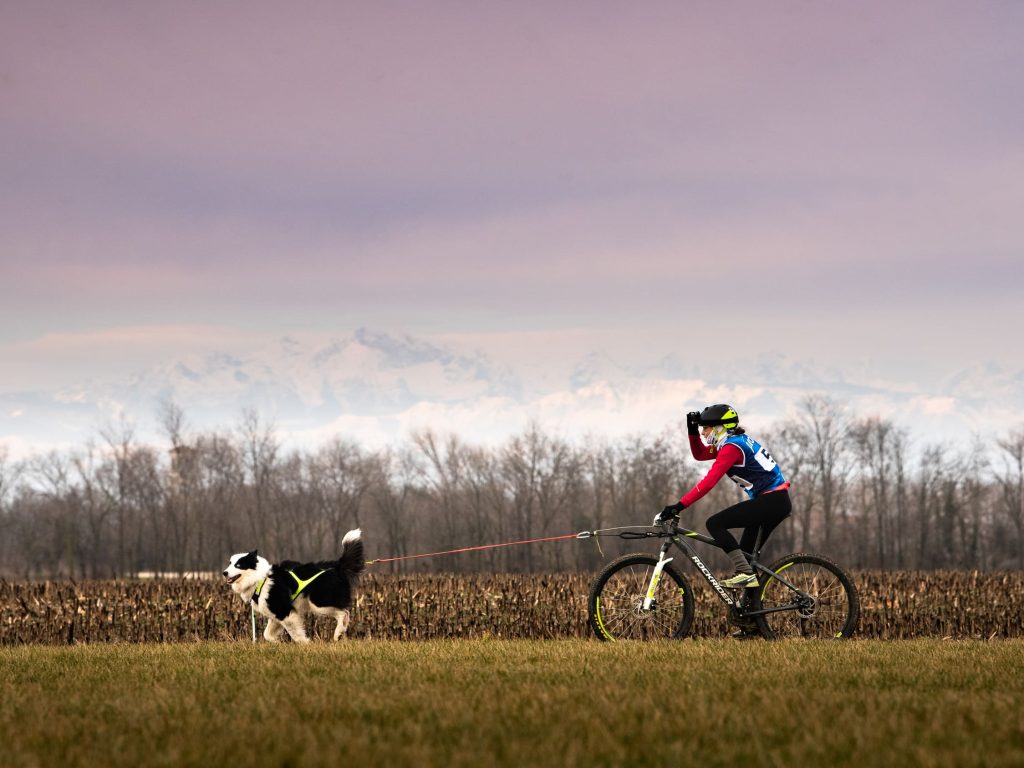
Equipment for bikejoring:
- Mountain bike (MTB): A sturdy bike with good brakes and tires for uneven terrain.
- Towline with shock absorption: The line is attached to the bike frame and runs through a bike antenna to prevent it from getting tangled in the front wheel.
- Bike antenna: A flexible rod that keeps the towline above the front wheel.
- Pulling harness for the dog: A harness designed to give the dog freedom of movement and comfort.
- Protective gear: Helmet and goggles are a must to protect your head and eyes. Gloves and back protection are also recommended.
Preparations:
- Train the dog to run in front of the bike without getting distracted.
- Start at low speed and with short sessions.
- Practice braking and steering in different terrains.
What is required of the participant?
You need to have good cycling experience, be able to handle high speed, and be prepared to make quick decisions. Bikejoring places high demands on balance, technique, and teamwork with the dog.
Dogscooter – Kick Scooter with a Sled Dog
Dogscooter is a middle ground between canicross and bikejoring, where you use an off-road kick scooter that the dog pulls. It is an excellent option for those who want speed but not as much as with cycling.
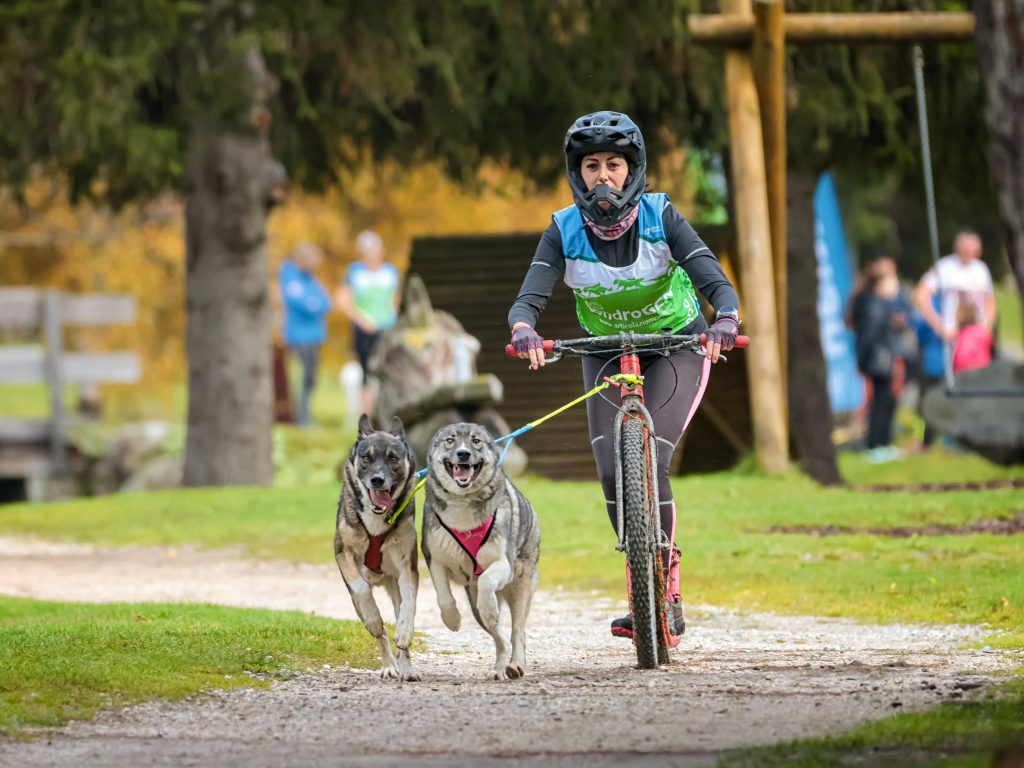
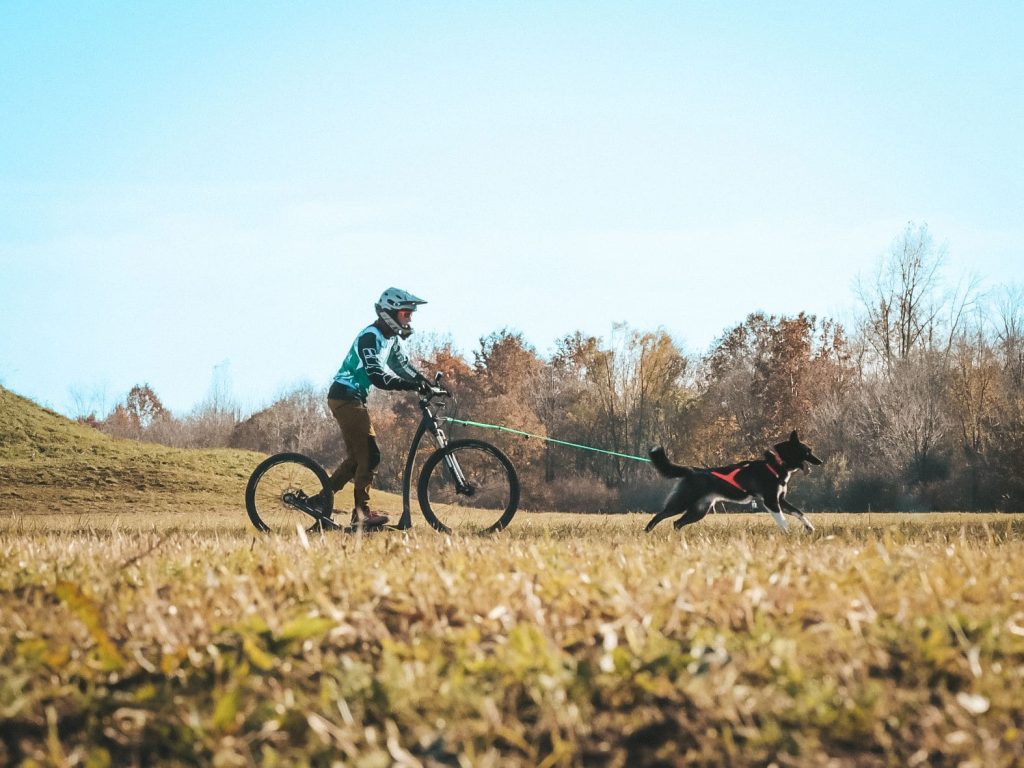
Equipment for dogscooter:
- Off-road scooter: A kick scooter with large wheels and good brakes.
- Towline with shock absorption: Attached to the scooter frame, and the line runs through an antenna just like in bikejoring.
- Bike antenna: Prevents the line from getting caught in the front wheel.
- Pulling harness for the dog: A harness designed to give the dog freedom of movement and comfort.
- Protective gear: Helmet and goggles are mandatory. Gloves and back protection are recommended.
Preparations:
- Train the dog to pull at the right pace and with focus in the right direction.
- Practice braking and steering the scooter in various terrains.
- Adjust the training to the dog’s age, breed, and fitness level.
What is required of the participant?
You need good balance, the ability to handle the dogscooter in varied terrain, and a strong partnership with your dog. Dogscooter suits both beginners and experienced mushers.
Which dogs are suitable for mushing?
Any dog that is healthy, in good condition, and enjoys running can be trained for mushing. Common breeds in the sport are northern breeds and pointing breeds, but herding dogs, retrievers, and German shepherds also work excellently. The important thing is that the dog has the right motivation and is not too small, generally the dog should weigh at least 15 kg to pull effectively.
Mental and Physical Preparation
Mushing requires not only physical strength but also mental presence. You must be able to read your dog, understand its needs, and adjust training accordingly. Regular training, recovery, and proper nutrition are essential for both dog and handler.
Where can you practice dryland mushing?
Forest trails, gravel roads, and exercise tracks are perfect places for dryland mushing. Many clubs offer organized training and competitions. It is important to follow local regulations and show consideration for other trail users.
Line lengths according to IFSS rules:
According to IFSS, the line shall be 1.5–2 m in Canicross and 2–3 m in stretched position for Bikejoring/Dogscooter.
Preparations before competition
- Check all equipment well in advance before you leave for the competition.
- ALWAYS go through the competition track carefully together with your dog before the race. If the dog knows where it should run, you minimize the risk of problems during the competition. If you as the handler also know the curves, route choices, etc., many seconds can be saved.
- Feed the dog 4–6 hours before the competition.
- Hydrate your dog about 2 hours before the start.
- Let the dog relieve itself and warm up 45–60 minutes before the start, but do not go to the starting area more than a few minutes before the start so the dog does not burn too much energy.
- When the start goes, have fun with your dog, and the result is a receipt of how well you have trained/prepared yourself and your dog.
- After finishing the competition, it is important to cool down the dog with a jog or a walk and to provide it with fluids and energy to speed up recovery for the upcoming challenges.
